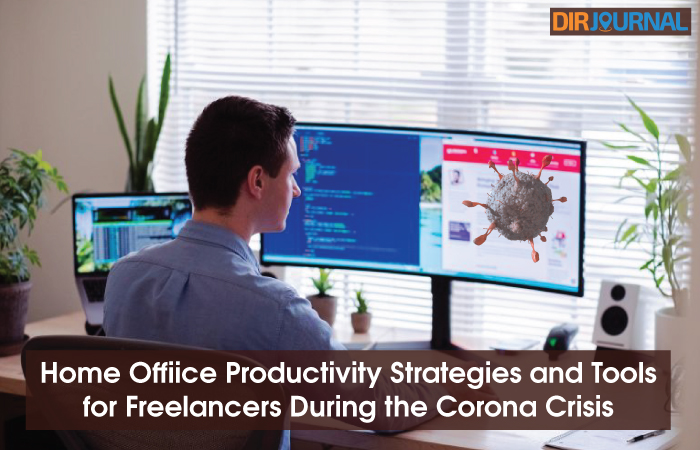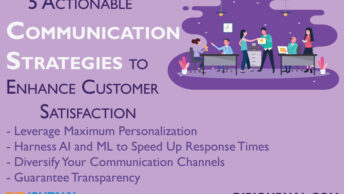The corona crisis has starkly altered the realities of work and life for millions of people across the United States, and the entire globe. In the midst of medical concerns, travel restrictions, and government-prescribed shutdowns, the economy is struggling.
For entrepreneurs and freelancers, these circumstances pose greater challenges than ever.
It’s not only crucial now to steer your business through the crisis with a calm and steady hand, adapting to changes as you go along, and shifting your business online. You probably also have to manage this gargantuan feat while forced to work from home.
Even though working from home is something many freelancers see as a benefit, there are also many who struggle with productivity. It’s a challenge to maintain your focus and dedicate yourself to your work while distracted by the comforts of home, attention-begging pets, or school-deprived children.
We’ve got your back.
This article outlines some tried and true actions you can take right now to maximize your productivity while working from home. It also includes a bunch of online tools to help you implement each of the suggestions and rock your business from your (temporary) home office.
1 – Plan and Structure
The first step to being productive in your own home is to plan and structure your day – and week – in advance.
For many entrepreneurs and freelancers, structure is provided by commuting to and from their co-working spaces, workshops or offices, by opening hours or meetings with clients and colleagues. In the time of the coronavirus, this is no longer the case.
Instead, you theoretically have the whole day at your disposal. Without a plan, you will likely end up wavering, hurting your productivity.
To avoid this, you need to set goals, track your activities, and find a structure for your business day that works. You don’t just have to figure out what needs to get done, but also when you can best do it.
Which are the times of the day when you are most productive? When is it the calmest, with the fewest distractions? And if you have kids – when can somebody else take care of them, so that you can dedicate yourself to your work?
Planning out your working life at home must also include definite times to begin and stop working, as well as dedicated breaks.
When working from home, it is all too easy to allow your work life to bleed into your free time: just one more report page, one more e-mail. But beware! That way lies madness, or burn-out.
It is absolutely essential to pull away from your screens and stop working on time for breaks and at the end of your day. Now more than ever, you need to take care of both your physical and mental health. Dedicated down time is crucial for this.
Even if you feel the world spinning around you with everything that’s going on, even if it seems that the survival of your business depends on you exhausting yourself right now, allowing yourself to take breaks, breathe and recharge makes you more productive in the long run.
Several excellent tools are available online to help you manage your time, the projects you are working on, and to assess your progress.
Most basically, writing a to-do list using resources such as Todoist can help you keep track of your goals. In terms of project management tools, Asana, Basecamp, Trello, ProofHub and Freedcamp stand out as some of the best and will help you track your own progress or that of your team.
2 – Carve Out a Working Space
Your couch is not an office. It’s as simple as that.
It can be tempting to take your laptop, cocoon in your pajamas, and make yourself comfy on your bed or couch. But you’re not likely to be productive in such a setting. (Speaking from experience, you will most likely end up binging your favorite TV series instead.)
When working from home, you need to put yourself in the right mindset for productivity. That certainly involves getting dressed in the morning, for one thing.
It is also essential to create a space in your home dedicated entirely to your work.
That space does not have to be an entire room – few have that luxury – but uncluttering a corner of your apartment can go a long way. Your new office does need a table and chair, plenty of light and power outlets, and good Wi-Fi – and you need to be able to remove all distractions, at least temporarily
As for tools to help you create your perfect productivity space, apps such as SelfControl and Focus@Will can reduce distractions and interruptions to your workflow. Streaming music through YouTube or Spotify is helpful for some to concentrate.
But for those who miss being out and about, working in different places, services such as Ambient Mixer or Coffitivity can help recreate the atmosphere of your favorite spots – libraries, co-working spaces, or coffee shops.
3 – Keep Up Communication
The current isolation policies of states and governments have cut us off from face-to-face contact, also in the business sphere.
But it is more important than ever to maintain communication channels and to keep in touch with colleagues, associates and clients.
Isolation weighs heavily on mental health, inducing anxiety and unrest, if not outright depression – that goes for business relationships just like for any others. Communication will reassure clients, increase team productivity and lift your mood.
Luckily, modern technology offers a wealth of remote communication tools.
Group messaging services such as Slack or Microsoft Teams allow communication between teams, while conference calls and meetings can be shifted online with Zoom, Skype or Nextiva. Communicating with customers, for example, can take the form of email campaigns (through services such as Constant Contact, or SendinBlue) or live chats (through software like LiveChat Inc.
Sharing and collaborating on documents with others is easier than ever, with cloud storage services like Dropbox and Google Drive, supplemented by document-sharing services like Google Docs.
4 – Extend Your Skills
Chances are that a fair amount of your normally busy time is left open. It may be because you are now spared long commutes, because you are missing out on social engagements, or because there is just not as much work to go around in the current economic situation.
Use this time wisely.
A good way to do that is to extend your skill set to serve you well during the crisis as well as afterwards. Whether by building on your existing knowledge, or learning something entirely new, increasing your capabilities will benefit you in the long run. Being savvy in website design, programming, SEO, marketing or other fields related specifically to your industry will give you a boost during and after the crisis.
This is made easier by many academic institutions, publishing houses and online libraries like Scribd, which are making their services available online during the corona crisis, often for free.
There are also a number of e-learning platforms out there that offer the help you need in achieving your learning goals – Coursera, Skillshare and Udemy are some of the best among these.
It doesn’t have to be something immediately relevant to your job, though. Even if you decide to dip into something not related to your field, learning new things and acquiring new skills – expanding your horizon – is sure to lift your spirits and recharge your batteries while you’re physically stuck in the same place.
5 – Rock Your Business Online
With the advent of the corona crisis, business life has shifted into cyberspace. As much as a third of Americans are working from home, and internet traffic across the US has increased by 25% in a single day.
That’s why it’s crucial to optimize your online presence and out-shine your competitors, right now more than ever.
It’s time to polish your website in terms of design and content, and to invest time and resources into improving your SEO performance. Diving deep into data analytics and reporting software can help you assess your performance and identify weak spots. Reviewing the sales and marketing platforms you are using, and possible alternatives, has the potential to drive your profitability even in the midst of the corona crisis.
In terms of tools to help you achieve this goal, marketing platforms such as Adobe Campaign, Crunchbase and DiscoverOrg, and sales tools like LinkedIn Sales Navigator and Lead 411 are among the best performers. SEO tools like Google Search Console and Screaming Frog SEO Spider, as well as data analytics and reporting software like Salesforce and Sisense can give you insights into your current performance and areas in which to improve. And if your website runs on WordPress, there is an extensive selection of tools for most of these tasks directly available as plugins.
Conclusion
Nobody knows how long the corona crisis will last, or how long the economy will take to recover afterwards. For the moment, all anyone can do is to take things in stride – to keep calm and carry on, as the cliché goes. Keeping healthy should definitely be your number one priority, including your mental health.
But being as productive as possible in your new home office comes in a close second.
By structuring your day, setting up a dedicated work space, keeping open your communication channels, extending your skills, and maximizing your online visibility, you can do just that.
At the end of this article, finally, a ray of hope. A two-year study by Stanford University actually found that the productivity of people working from home increased by a fifth in comparison to a control group. Even though most of them, in the end, preferred to not work from home all the time.
There is little choice for many at the moment. But focusing on what you can do right now and optimizing your time at the home office will enable you, and your business, to weather this crisis and emerge stronger than before.







